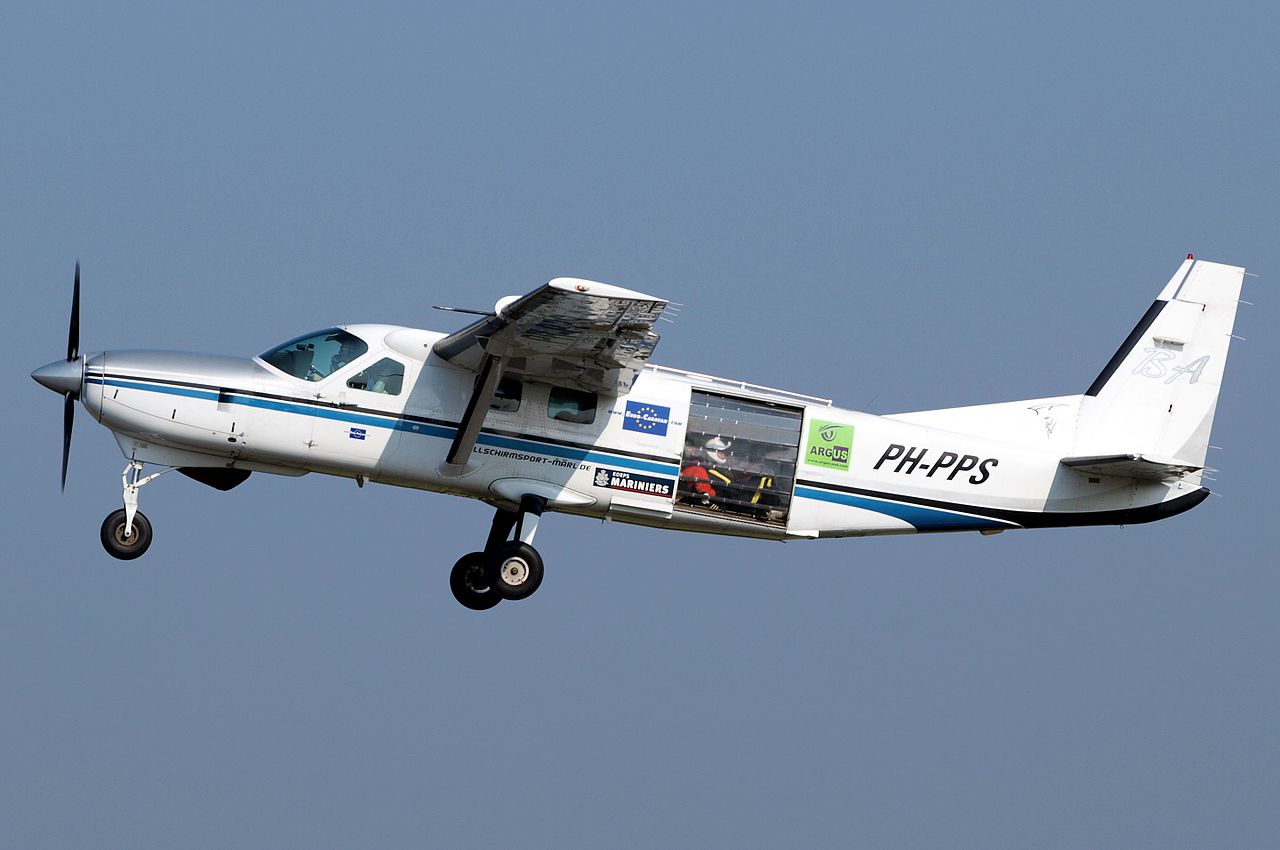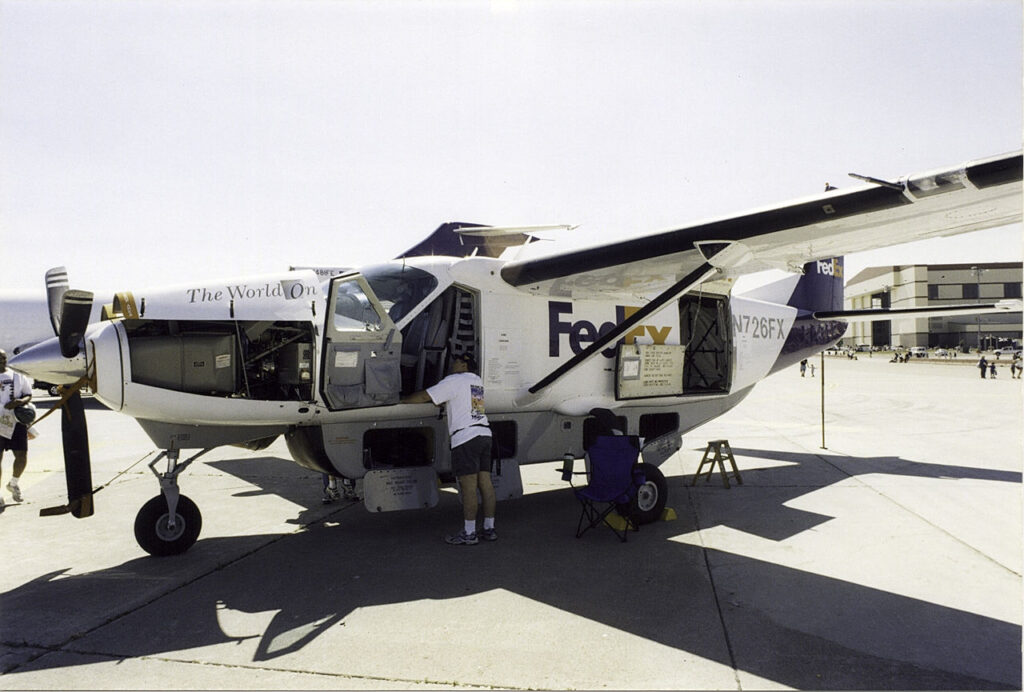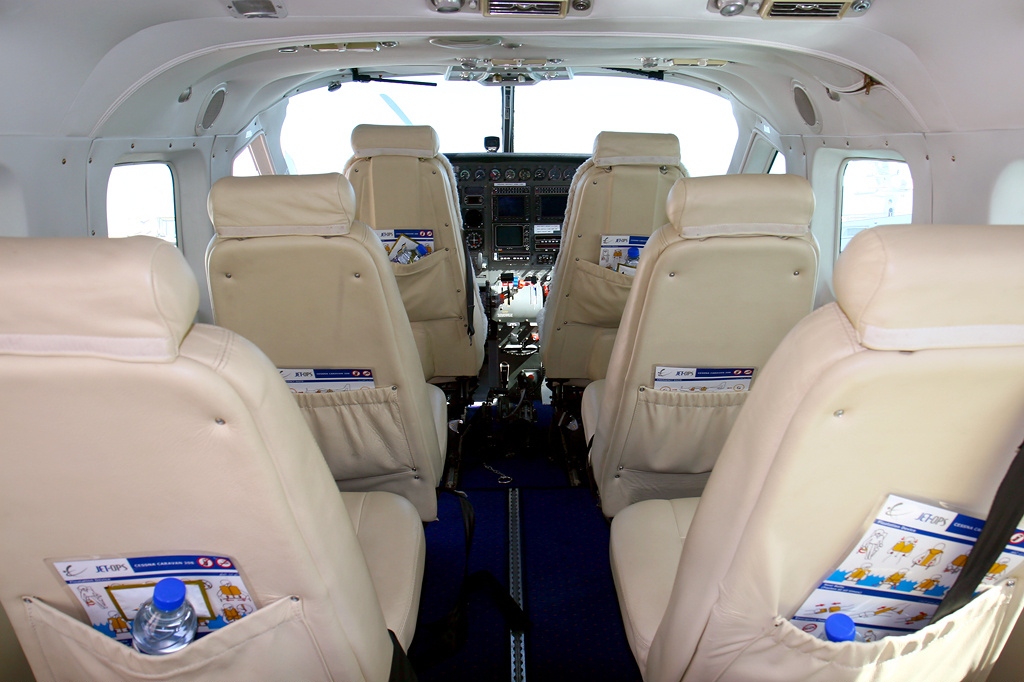
More often than not, consumer products are generally quite unremarkable. The first step is a market survey which determines the needs of the average consumer and then the blueprint is produced catering to those very needs. It is a process that is non-creative at its very core and allows for a very mechanical process of product building, where true innovation is almost never seen.
However, sometimes along the line, there comes a revolutionary product that breaks down the very problem itself and creates a solution that people are eager to try. Today, we are going to be discussing an aircraft that has the great pedigree of the Cessna name, combined with a rugged soul which has made it one of the most unique aircraft ever flown. In fact, by 2017, 2600 of these Cessna 208 Caravans have been delivered by Cessna, with more than 20 million flight hours logged by them. They are used for a variety of different mission profiles, such as pilot training, VIP transport, cargo, and even as an air ambulance. Without further ado, let’s get into the story of this amazing aircraft.
Development
Cessna‘s Pawnee engineering facility has always been known for producing some of the most innovative ideas that have ever come out of the house of Cessna. John Berwick, who was the chief engineer at Pawnee in 1981, came up with the idea of a single-engined, high-wing airplane that had the ability to deliver and handle large payloads. After approaching the leadership of the company, John Berwick was finally given the green light to go ahead with the project. By 1982 December, the first prototype had already been taken to the air. By 1984, the production model had received certification from the FAA. Interestingly enough, a variant that came to be known as the Cargomaster was also developed at the special request of none other than Federal Express, more commonly known as FedEx today.
In fact, they liked the aircraft so much that they decided to request another one with a longer fuselage. This one was quite uncreatively named the Super Cargomaster. The large freight capacity of the aircraft made it perfect as a ‘hauler’ for the skies, which is exactly why Fed Ex was so interested in it. However, the executives at Cessna also realized that there was another market for this aircraft. A passenger variant called the 208B Grand Caravan was essentially the Cargomaster being dressed up in a few frills in order to be used for the transport of people. What followed was a production run that has lasted decades, being a testament to the quality that Cessna has been able to capture with this aircraft. In 2021, the simple 208 Caravan’s unit cost comes in just shy of $2.5 million, with the Grand Caravan being over $2.8 million.

Production in the East
As we all know, industrial production for more everyday items has rapidly moved to China in the last 2 decades. While industries like aircraft manufacturing definitely have been much more resistant to this, one example of this technological exodus is the production of the Cessna 208 Caravan in China. In 2012, Cessna announced that they would be establishing an assembly line for the 208 Caravan in China, with the CAIGA responsible for the final assembly of the aircraft. The parts were still being made in the US, but they were flown off to China to be assembled. In a few years, about 30 aircraft have been made and delivered to customers in China using this assembly plant.
Specifications
The Cessna 208 Caravan can either seat 10 or 14 people as a single-engine aircraft, which is quite impressive in its own right. The PT6A-114A turbine engine produces an extremely respectable 675 horsepower and allows it to become the workhorse that it is known for being. One of the biggest selling points of this aircraft is the fact that is one of the most rugged aircraft in the world. Even the most demanding and dangerous environments that you can think of have already been mastered by the Cessna 208. The 3 decades of being the last word in terms of reliability have meant that customers are still more than happy to invest in the aircraft even after a long time of being in production.
A natural consequence is a fact that Cessna 208 Caravan has extremely low operating costs, making it even more attractive. Since the engine is so well-known and understood, the process of repair and maintenance has also been made easy, coupled with great factory support. Moving on to more hard statistics, the Cessna 208 Caravan is able to fly at a maximum speed of 213 miles an hour. It has a very impressive range of 1078 nautical miles, which is nearly 2000 kilometers. Naturally, the passenger experience of this turboprop is one that can be described best as being ‘compromised’ since the primary purpose of this aircraft is to haul and not to transport people. From the inside, the cabin height measures 4 feet and 3 inches. The cabin width comes in at around 5 feet and 2 inches. The length of the cabin is going to be around 14 feet and 10 inches, which is actually quite sizeable for its weight class.

Variants
Over the years, there have been a plethora of different variants of this aircraft. Let’s go through all of them.
208 Caravan: The basic variant, outfitted for use by passengers.
208 Caravan 675: This is the current model that is in production for the basic Caravan, the only major difference between this and the 208 Caravan is that this has some changes in the interior and a much more powerful engine.
208 Cargomaster: Already discussed above.
208B Grand Caravan: Already discussed above.
208B Grand Caravan EX: A more powerful version of the 208 Grand Caravan
208 Super Cargomaster: Already discussed.
Caravan Amphibian: One of the more interesting Caravans in the family, this particular aircraft had Wipaire 8000 floats instead of landing gear which made it perfect for water landings.
Soloy Pathfinder 21: A version of the Caravan that was twin-engined, developed by the Soloy Corporation
850 Caravan: A 208 with an 850 hp engine.
959 Grand Caravan: A Grand Caravan with a 1000 hp engine
Military
It seems that almost every facet of the aviation industry has found some use for the 208 Caravan, with military aviation also being the same. There have been several military variants of the Caravan as well, such as the U-27A, a very basic military version of the 208. The C-98 was used by the Brazilian Air Force. It was essentially a U-27A, with a different designation. The C-16 was going to be the proposed designation for the aircraft in the US Army. The AC 208 is certainly the most interesting of this lot. This was an ISTAR version built by the ATK and armed with hellfire missiles. Since 2014, the Iraqi Air Force has been getting a lot of good use out of this aircraft, being mainly used against insurgents in the Anbar province. The topography of the area has meant that the 208 has an operational advantage in that area. So, the Cessna 208 has actually also seen direct combat as well!
The Cessna 208 Caravan is one of the best examples of timeless American engineering. It has been nearly 40 years since it was first introduced to the public. The world has gone through a massive cultural change with the advent of the internet. In fact, there have been 3 major market crashes since that time and there are so many things that have absolutely changed. However, what hasn’t changed is the idea of good, reliable design. This is exactly why the 208 Caravan still fetches a great price in the used markets. What started as a concept in the head of an engineer has become one of the best-selling turboprops of all time, with the aircraft standing proud amongst the more ubiquitous turboprop offerings by Cessna such as the Cessna 172 (which has sold more than 44,000 units, a world record in the aviation industry). Even Cessna itself has changed, going under the ownership of Textron and seeing different administrative regimes over the years. However, the spirit of the Cessna 208 stands yet to fall, showing that this old guy still has a few punches left in him.


No Comments